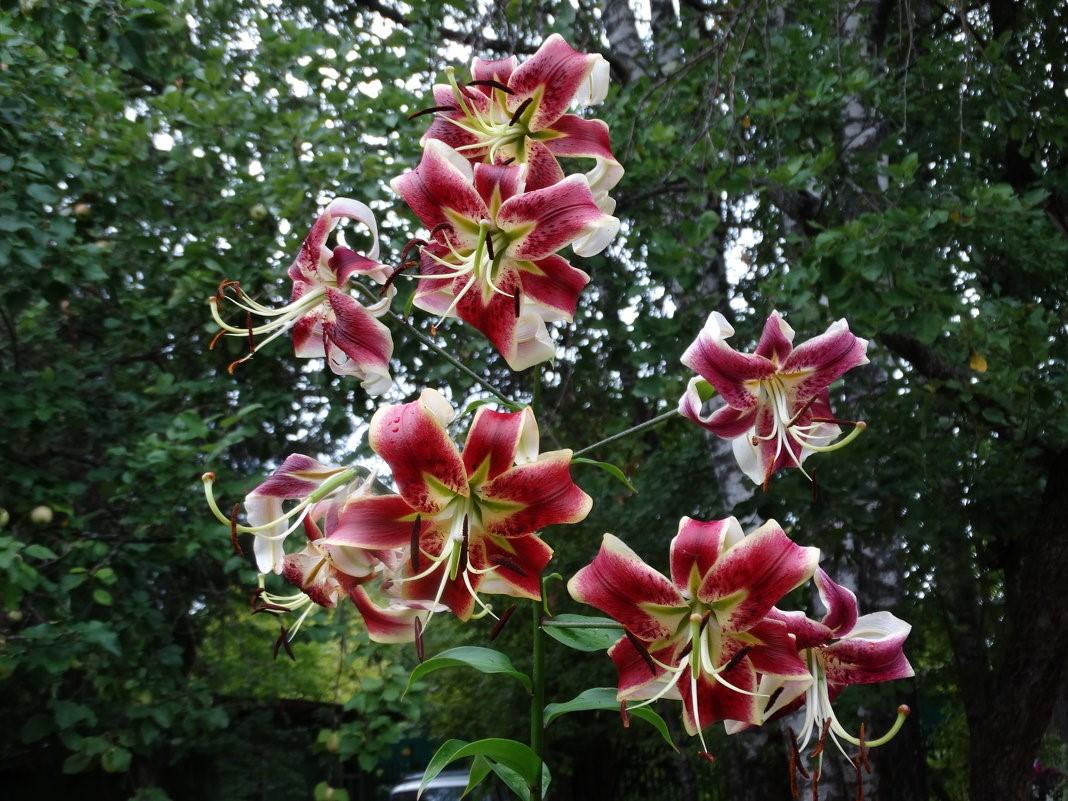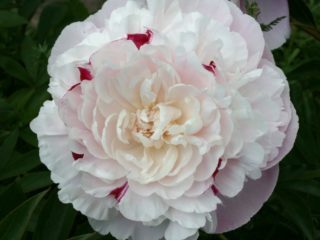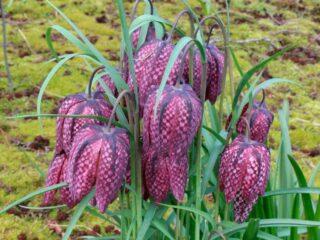Content
Lily Scheherazade is a bright flower that many people dream of growing in the garden. The plant prefers warm climates, but grows without problems in northern climates if you take care of it. This is an ornamental variety and is used in landscape applications. Designers place it in groups with other lilies.
History of appearance
The plant is a hybrid obtained by crossing Black Beauty and Thurderbold. The variety was bred in 1952, the originator is Levern Freeman, a famous scientist who gave the world dozens of varieties.

Despite the fabulous name, the birthplace of the Scheherazade lily is the USA
Description of the Scheherazade lily
The variety grows to 1.5-1.9 m in height. Powerful stems are capable of holding buds without garter. They occupy an upright position, the shoots are characterized by moderate branching.

Depending on the lighting and age, the bush can be light or dark green
The fibrous roots of the Scheherazade lily are able to quickly absorb nutrients, providing the plant with everything it needs and accelerating growth. Its leaves, like those of other lilies, are large, smooth, with a monotonous color and a glossy surface. The plates are located closer to the ground and are almost never found at the top.
Scheherazade is a perennial that can be grown for four years without replanting. Each stem produces about 35 buds. Each reaches up to 18 cm in diameter. The flowers are directed downwards or to the side. An interesting feature was their colors - non-standard and bright. Contrasting spots flash against the background of the petals.
The variety is characterized by an average flowering time. At the same time, some of the flowers fade, and some are just beginning to open. Budding occurs in July, ends in August, and less often in September.
Gardeners are pleased that with age, the Scheherazade lily becomes more magnificent. This is possible thanks to the annual planting of new buds. An important factor for intensive flowering is lighting and soil fertility.
Advantages and disadvantages
The plant can add variety to any garden – even if planted separately. The Scheherazade lily has become widespread not only because of its flowers, but also due to other advantages.

The crop is rarely affected by pests
Pros:
- resistance to common diseases;
- resistance to negative temperatures;
- flowers do not need to be covered in winter;
- simple planting technology;
- unpretentiousness;
- drought resistance.
Minuses:
- vulnerability to winds.
Planting the Scheherazade lily
Planting work is planned for mid to late spring. Some people plant the OT hybrid Scheherazade in early autumn. Much depends on weather conditions and climate. A month before planting, the soil is dug up and organic mixtures of peat and compost are added.
When the time comes to plant, dig a hole 20 cm deep. You need to pour river sand and additional fertilizing (preferably complex store-bought) into the bottom.Lily roots are kept in a manganese solution and only then placed in the ground. They need to be straightened before burying.
Caring for the Scheherazade lily
Caring for the plant consists of simply following agrotechnical rules. Lily OT-hybrid Scheherazade is watered in the evening using warm liquid (possibly containing food supplement). The culture does not react well to overwatering, so in spring and summer it is moistened about three times a month. When the flowers completely wither, stop watering.
Sometimes the soil will have to be weeded - a simple measure, but extremely useful. In the fall, sanitary cutting is carried out, cutting off the stems by 80% of the current height.

Sections no longer than 20 cm should remain above the ground
Preventive treatments are carried out several times per season. The same goes for applying fertilizers. In the spring, nitrogen-based mixtures are used, and by the beginning of flowering they switch to potassium-phosphorus complexes.
Reproduction
The plant is propagated by division or by cuttings. The first is practiced more often, since the method allows you to get a lily that is ready to bloom next year. The disadvantage is that only an adult plant can be propagated - and only when it is transplanted.
Lily Scheherazade does not like to have her bulbs touched. It is recommended to separate nests no more than once every four years. In this regard, the flower is difficult to propagate by children.
In the fall, the bulbs need to be collected and placed in a pot. They will stay there until summer. They are transplanted into the garden, leaving 25-30 cm of free space between specimens.
Photos in landscape design

The crop is grown next to the house to highlight the light facade

The plant does not always welcome neighbors; more often it is planted separately

Fast-growing plantings look great against the background of trees, but they are not placed under the shade of the crowns
Conclusion
Lily Scheherazade is a light-loving plant that is very easy to grow. The gardener needs to carefully monitor the frequency of watering. Excess moisture is fraught with the appearance of rot and wilting of flowers. To protect plantings from infections, the beds are sprayed with a fungicide several times a season.
Reviews of the Scheherazade lily








